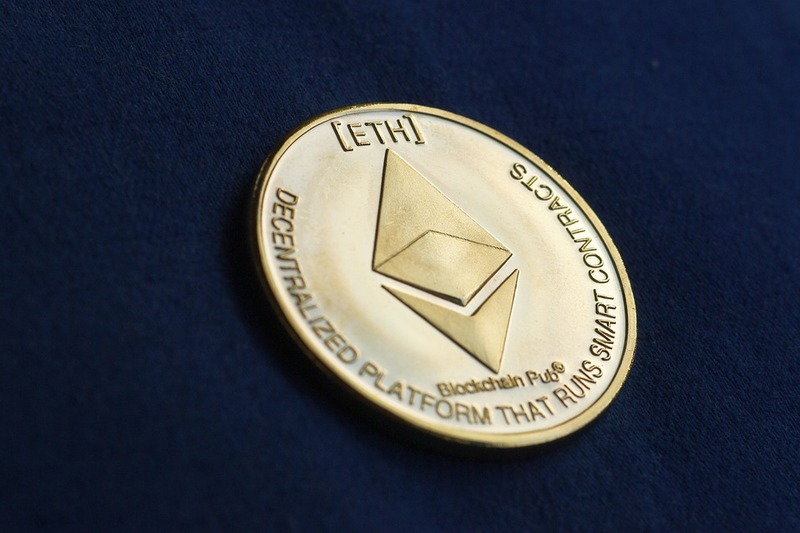
- Happy wife, happy life except that Ethereum (or any other cryptocurrency) is not your partner, a point that in the frenzy too many investors forget.
- Before you do anything with blockchain-based assets, you must realize that markets rise and fall, meaning that you need hard data to be your north star.
- The crypto complex is simply not getting the job done so realistically, it might be better for investors to wait for an even more attractive discount.
After briefly slipping below the $900 level over the past weekend, Ethereum (ETH) along with the rest of the cryptocurrency complex has been on a near-term tear. At time of writing (the morning hours of the June 20 session), ETH broke above the $1,100 level, which was critical. The last time the crypto was consistently below four digits was late 2020/early 2021.
For proponents of the space – who rely heavily on memes such as holding on for dear life (HODL) – this latest burst of positive momentum could be the rally embattled crypto stakeholders have been waiting for. In reality, it’s very possible that this cycle could be the most dangerous for the sector. Under the emotional frenzy of crypto investing, too many advocates are throwing common sense out the window.
Unlike what happens in centralized ecosystems, there is no Federal Reserve to save the crypto sphere. Fundamentally, if you accept and embrace pure financial decentralization, you cannot then cherry pick at what points decentralized principles should no longer apply. Put another way, free market forces alone control cryptos – and devastating impacts to this invisible hand will likely take longer than a holiday weekend to resolve.
Unfortunately, the price action and transactional dynamics in Ethereum and other major cryptos are signaling significant vulnerabilities. Therefore, this latest rally could be a contrarian bull trap.
The Data (Probably) Doesn’t Lie
In many ways, cryptos are like exotic cars. They’re fast, they’re flashy and everyone that sees you pulling up in one wants to be your friend. During the highs, there’s nothing better than exotic-car ownership. During the lows, there’s nothing worse – especially when the maintenance bills come in.
The statement above isn’t meant to deter you from engaging in cryptos. Rather, you should do so smartly and under terms which you are comfortable with. To intelligently participate in the blockchain revolution, then, you should ignore the memes and anecdotal tales and focus on the hard evidence.
Like it or not, the data shows that Ethereum in particular has a long ways to go before sparking a true recovery. At time of writing, the ETH order book is signaling that asks (sell orders) are outgunning bids (buy orders) by a 6% margin, $520.39 million to $490.30 million. It confirms that contrary to the memes, the ETH community is not exclusively holding the line.
But that’s just small potatoes. Currently, the inflows of cash into ETH wallets amount to $13.76 billion, just over 1% higher than cash outflows ($13.59 billion). Again, this metric points to the contradiction between narrative (i.e. HODL-ing) and actuality (people are dumping ETH).
Even more problematic is that on some days, substantially more cash outflows were recorded than inflows. For instance, on June 17, $1.67 billion exited Ethereum wallets while only $1.37 billion went in, which is a 22% gap.
So much for holding the line.
Ask Yourself the Basic Question
The dynamic above focuses on a key frustration about cryptos and why you should never emotionally involve yourself in digital assets. While people on social media are talking tough on their keyboards about how they’ll never sell – usually under the guise of not giving into hedge funds – the reality is that somebody is selling; indeed, quite a few somebodies as cash outflows have conspicuously outpaced inflows for several sessions.
Therefore, if you get anything out of this article, it’s that you should always look out for your best interests. For all the tough talk in the crypto space, the sector is proving to have more than its fair share of weak hands.
Now, regarding the recent uptick in Ethereum, you must ask yourself a basic question: did anything fundamentally change to justify the valuation spike?
Is inflation fading meaningfully? Is the economy poised to improve? Did a breakthrough occur to help resolve geopolitical tensions? Have regulatory agencies announced a clear and transparent framework for crypto investments?
The more evidence points to a lack of fundamentally positive developments, the more probable it is that any bullishness is tied to technical catalysts. That would be fine if technical indicators were positive. Right now, they’re not.
Specifically, ETH investors should be aware that stakeholders making money at the current price ($1,131) is slightly geared toward the bulls, with 50% in the money and 47% out of the money (3% are neutral). But should the price creep lower, this ratio will eventually swing bearishly. Before then, however, a great many holders could panic out.
Practicing the Preaching
For full disclosure, I’m practicing exactly what I’m preaching. Recently, I unloaded a significant portion of my Ethereum holdings. Should ETH rise in the interim, I’m planning on selling more. Ultimately, I see the coin slipping down to $500 if not lower. Therefore, it doesn’t make sense for me to HODL and miss out on the opportunity to really load the boat.
Keep in mind that is the end goal here. Cryptos have now been deeply ingrained into the collective consciousness. There’s no putting this cat back in the bag so I’m long-term bullish. I’m just bullish in a strategic way.
Disclosure: The author owns ETH.
More Crypto News from Barchart





/Micron%20Technology%20Inc_billboard-by%20Poetra_RH%20via%20Shutterstock.jpg)

/Meta%20Platforms%20by%20Primakov%20via%20Shutterstock.jpg)
